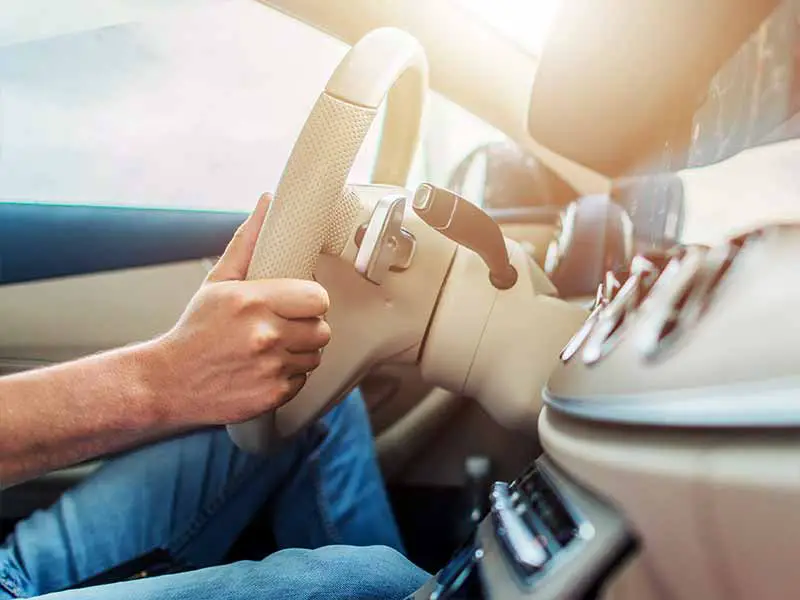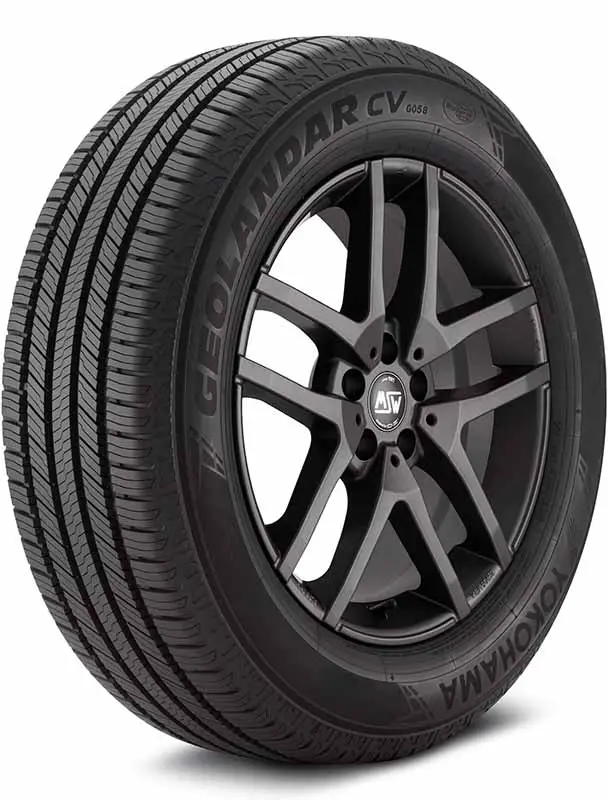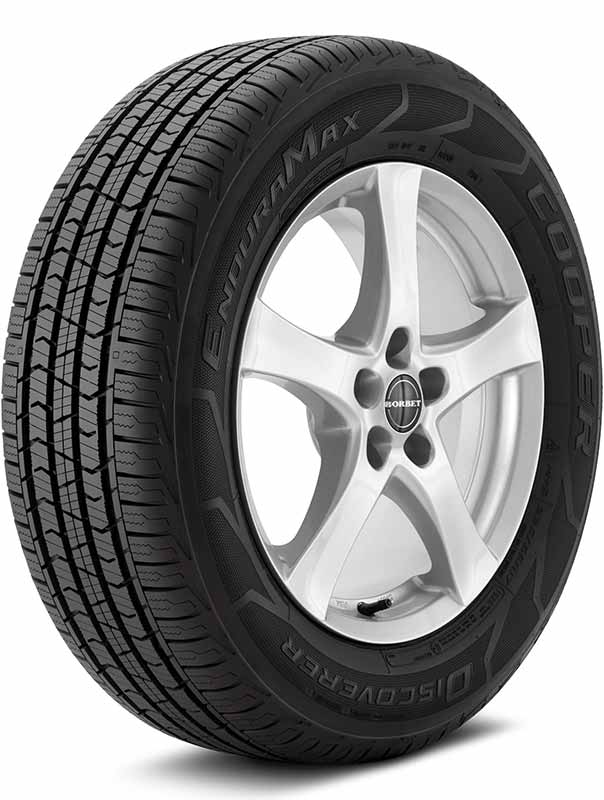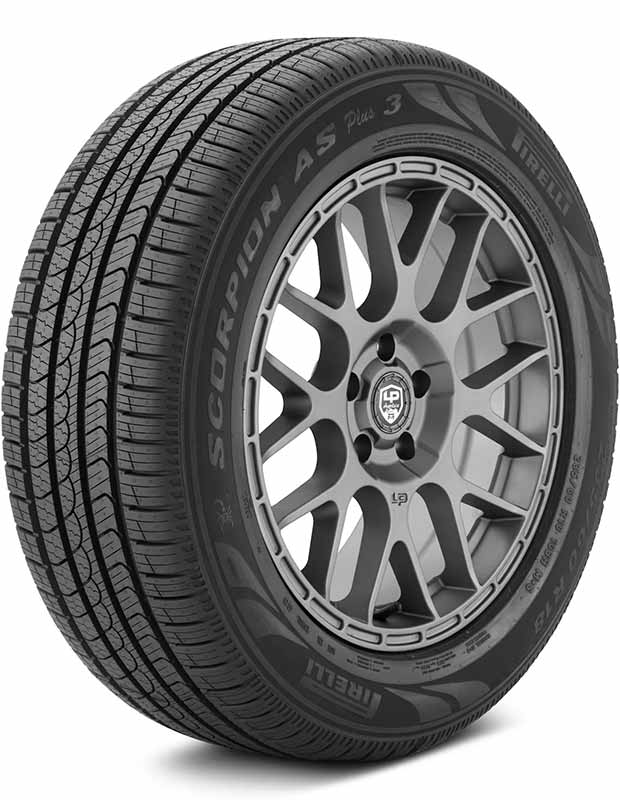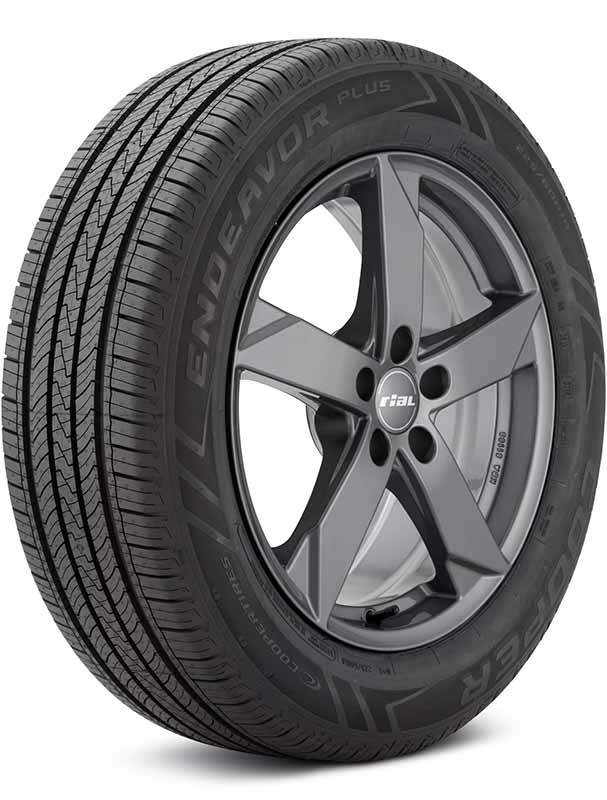Ever been cruising down the road, only to be met with strange sounds from your vehicle, throwing off your peaceful drive? Those mysterious noises might be your car’s way of crying out for attention, warning you of bad wheel alignmentissues you shouldn’t ignore.
Bad Alignment Noise
Bad alignment noise typically sounds like a consistent humming or roaring sound from the tires, especially when driving at high speeds. This noise is different from the clunking of suspension issues or the grinding sound of failing wheel bearings.
In this article, we’ll unravel the mysteries of wheel alignment, dive deep into the sounds and symptoms of alignment issues, explore the role of wheel bearings, and guide you on addressing and fixing these pesky problems to ensure a smoother, safer drive.
Let’s take a closer look.
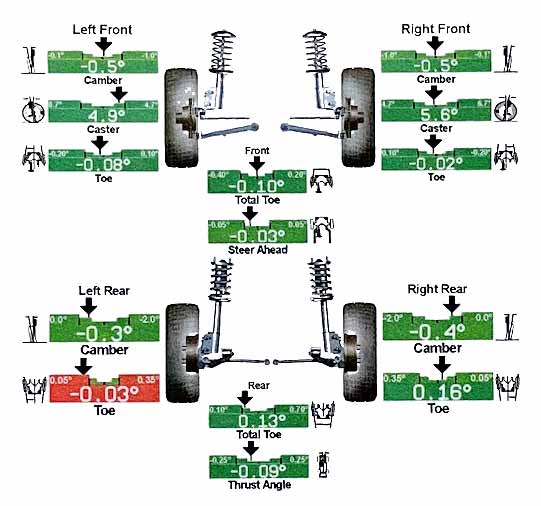
Bad Alignment Symptoms: Sounds and More
Tire alignment plays a critical role in the overall health and performance of your vehicle. Misalignment can lead to a plethora of problems, and it often manifests itself through various sounds. Recognizing these symptoms early can save you from costly repairs down the line.
Clunking Noise
- Misaligned tires or worn-out suspension components can often result in a distinct clunking noise.
- This noise typically becomes more pronounced when you’re driving over bumps or uneven road surfaces.
- Possible culprits:
- Loose or damaged suspension parts.
- Issues with the steering components.
The ‘Womp Womp’ Tire Sound
- This distinctive noise indicates a potential problem with tire wear.
- It’s often caused by irregular wear patterns on your tires due to misalignment.
- Resolving this requires realignment and possibly the replacement of the affected tire.
Humming Noises
- Misaligned tires can create a consistent humming or droning noise.
- The noise usually becomes louder at higher speeds.
- Causes can include:
- Uneven tire wear.
- Tires that are under-inflated or over-inflated.
- Damaged or worn-out wheel bearings.
Screeching Sounds
- A high-pitched screeching sound, especially when turning, can indicate alignment issues.
- This sound often results from tires that are struggling to maintain grip on the road due to improper alignment angles.
- It’s essential to address this promptly as it indicates that the tires aren’t maintaining optimal contact with the road, which can affect safety.
Impact on Steering Wheel
- One of the most tangible signs of bad alignment is the behavior of the steering wheel.
- If the steering wheel vibrates or feels loose, it could be due to misalignment.
- A steering wheel that’s off-center when driving straight is another clear indicator.
Sudden Loud Noises from Tires
- A sudden increase in tire noise can be alarming, and while there are multiple potential causes, misalignment is a common one.
- Misalignment can cause your tires to wear unevenly and at an accelerated rate, leading to increased road noise.
- Regular tire inspections can help catch uneven wear patterns early.
Uneven Wear Patterns
- Uneven tire wear is one of the most common symptoms of bad alignment.
- Signs to look for include:
- Excessive wear on the inner or outer edges of the tire.
- Patchy wear in certain areas of the tire.
- Smooth areas juxtaposed with areas of deeper tread.
- These wear patterns can significantly reduce the lifespan of the tire and may compromise safety.
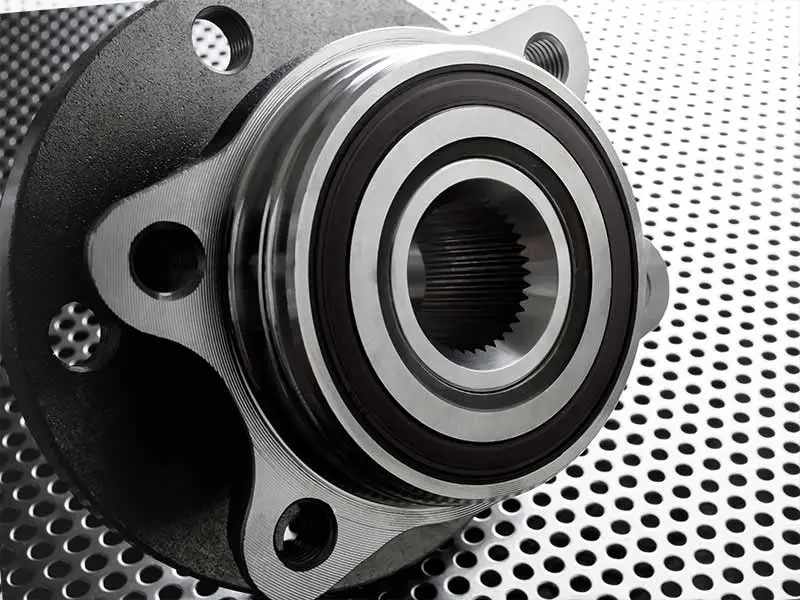
Wheel Bearings and Their Role
Wheel bearings play an essential role in the proper functioning of your vehicle. They allow the wheels to spin with minimal friction, ensuring a smooth ride. A fault in these bearings can lead to a variety of problems, including noises that can be easily mistaken for alignment issues.
The Sound of a Failing Wheel Bearing
- When a wheel bearing starts to deteriorate, it typically produces a grinding or roaring noise that’s similar to metal scraping on metal.
- This noise tends to:
- Grow louder with increased vehicle speed.
- Be more pronounced during turns.
- Vary in intensity depending on which bearing is affected.
Differentiating Between Bad Alignment and Bad Wheel Bearings
Distinguishing between the sounds produced by bad alignment and failing wheel bearings is crucial to accurate diagnosis. Here are some pointers:
- Wheel Bearings:
- Noise changes in pitch or volume when changing lanes or taking curves.
- Noise may be isolated to one particular wheel area.
- Sometimes accompanied by a wobbly wheel or a hot hubcap.
- Bad Alignment:
- Noise typically consistent regardless of lane changes.
- Often coupled with uneven tire wear.
- May be associated with a crooked steering wheel when driving straight.
Dangers of Ignoring Wheel Bearing Noise
It’s vital not to overlook or ignore the sounds emitted by faulty wheel bearings. Here’s why:
- Safety Hazard: A severely deteriorated wheel bearing can cause the wheel to come off the vehicle, leading to dangerous situations, especially at high speeds.
- Further Damage: Ignoring a faulty wheel bearing can lead to additional wear and tear on related parts, such as the hub, spindle, and brake components.
- Increased Repair Costs: Addressing a problematic wheel bearing early can save significant money. As it deteriorates further, repairs become more complex and expensive.
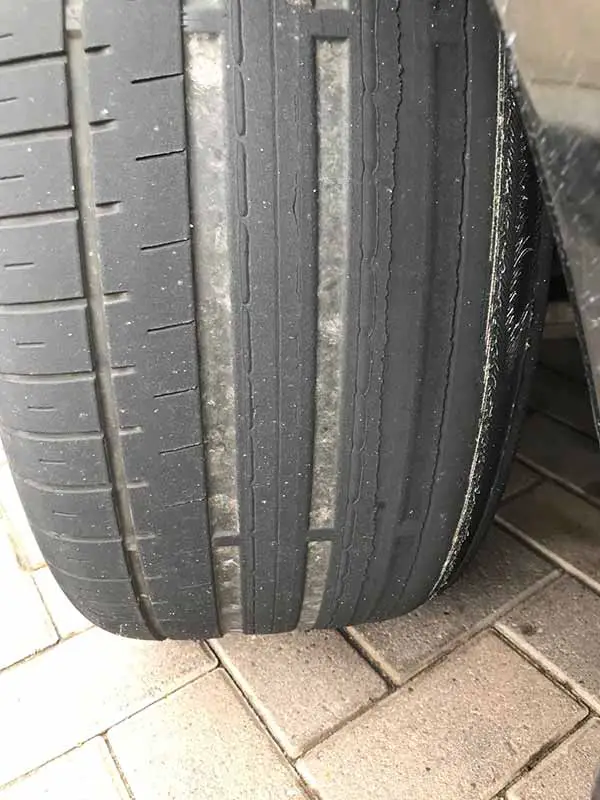
The Consequences of Driving with Bad Alignment
When a vehicle’s wheels aren’t properly aligned, it doesn’t merely result in an uncomfortable driving experience. Over time, the consequences can be quite severe, impacting both the vehicle’s performance and safety.
Risks of Ignoring Misalignment
- Decreased Fuel Efficiency: Improperly aligned tires can increase rolling resistance, making the engine work harder and thus consuming more fuel.
- Premature Tire Wear: As previously mentioned, uneven wear patterns can develop on misaligned tires. This means tires need to be replaced more frequently, increasing maintenance costs.
- Decreased Handling and Safety: A car that’s out of alignment might not respond predictably in urgent situations, potentially leading to accidents.
Long-term Impact on Tire Wear and Uneven Wear Pattern
Tire wear is not just an issue of longevity; it also pertains to safety:
- Reduced Grip: Tires with uneven wear might not grip the road effectively, especially in wet conditions, leading to potential skidding.
- Blowouts: Over-worn sections of a tire are more susceptible to punctures and blowouts, which can be especially dangerous at high speeds.
Effects on Suspension Components
Misalignment doesn’t just harm the tires; it can also wear out other vital parts of your vehicle:
- Increased Stress on Suspension: Bad alignment can place undue stress on suspension components, leading to premature wear or even failure.
- Impaired Steering: Over time, the steering components can become damaged, making the vehicle harder to control.
- Costly Repairs: As more components get affected by the misalignment, repairs become more extensive and expensive.
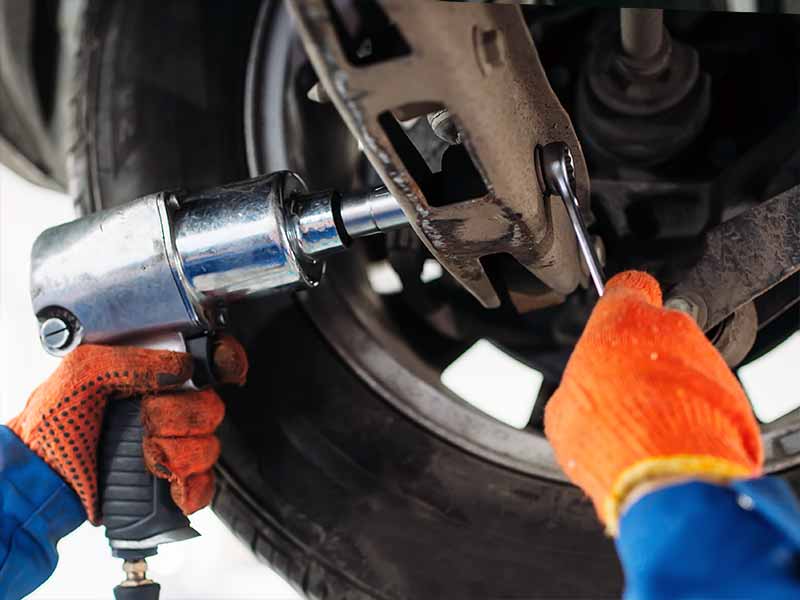
Addressing and Fixing Alignment Issues
Wheel alignment is more than just a routine vehicle maintenance procedure. It’s pivotal for ensuring a comfortable driving experience, longevity of tires, and overall safety on the road. So, how does one address and fix these issues?
Importance of Regular Wheel Alignment Service
Routine check-ups are vital:
- Enhanced Longevity of Tires: Proper alignment ensures that tires wear down evenly, providing a longer tire life.
- Optimized Fuel Efficiency: A well-aligned car reduces the rolling resistance of tires on the road, contributing to better fuel efficiency.
- Improved Handling and Safety: Proper alignment translates to better road grip and more predictable steering, essential for safe driving.
Recognizing the Need for Professional Help
While many symptoms indicate a bad wheel alignment, certain signs should prompt immediate professional consultation:
- Pulling to One Side: If your car drifts to the left or right while driving on a straight and level road, it’s a clear sign.
- Vibrating Steering Wheel: Excessive vibrations in the steering wheel, especially at specific speeds, can indicate alignment issues.
- Rapid Tire Wear: If you observe uneven wear or your tires seem to degrade faster than usual, it’s time for a check-up.
Tips for Maintaining Proper Alignment
Prevention is always better than cure:
- Avoid Potholes: Driving over potholes can jolt your vehicle’s suspension system, throwing your car out of alignment.
- Be Cautious of Curbs: Hitting a curb, even at low speeds, can alter your vehicle’s alignment.
- Regular Inspections: Even without evident symptoms, it’s wise to have your alignment checked at regular intervals, as specified in your vehicle’s maintenance guide or by a trusted mechanic.
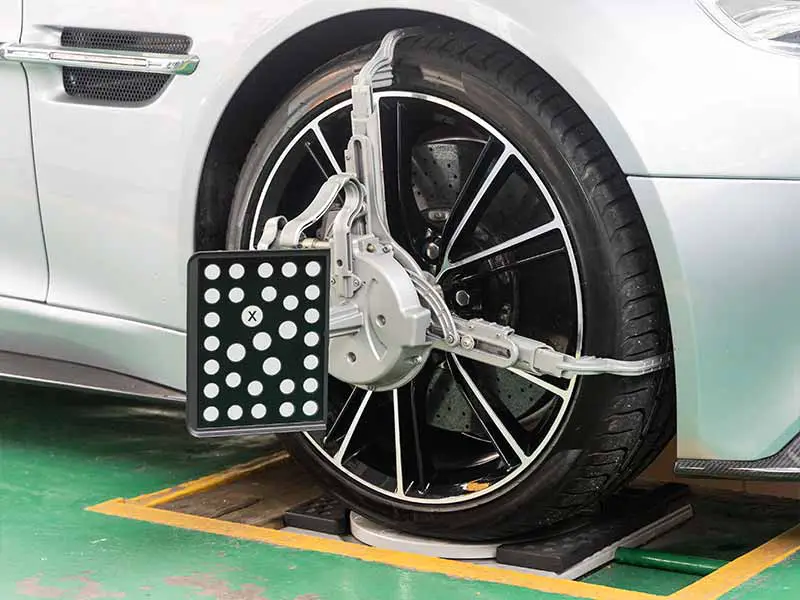
Understanding Wheel Alignment
Wheel alignment, sometimes referred to as tire alignment, is a critical aspect of car maintenance. To appreciate its significance and the need for periodic checks and adjustments, it’s vital to grasp the basics.
What is Wheel Alignment?
At its core, wheel alignment involves:
- Adjusting Angles: It’s the process of ensuring that the wheels of the vehicle are set to the optimum angles as specified by the vehicle manufacturer.
- Promoting Even Tire Wear: Proper alignment ensures that tires wear down at the same rate, providing maximum lifespan.
- Optimizing Contact with Road: It ensures that the tires make the best contact with the road, improving vehicle safety and performance.
The Three Primary Alignment Angles
There are three main angles that technicians check and adjust during a wheel alignment:
- Camber: This is the inward or outward tilt of the tire when viewed from the front of the vehicle. Improper camber can cause edge-wear on the tires.
- Toe: Imagine looking down at your feet; if you point your toes inward, that’s “toe-in,” and outward is “toe-out.” Similarly, for vehicles, it’s about whether the front of the tires are closer or further apart than the rear.
- Caster: This angle involves the pivot point from the steering mechanism. It affects the steering’s stability and balance.
Why Does Alignment Go Bad?
Several factors can cause bad wheel alignment:
- Normal Wear and Tear: As vehicles age, rubber components start to dry up and metal parts start to wear out, leading to alignment drift.
- Road Conditions: Potholes, bumps, and other road hazards can cause alignment issues.
- Accidents: Even minor fender benders can result in alignment problems.
Resources
Below are some links you may find helpful when learning about tires
- What causes front end clunking noise when going over bumps? – J.D. Power
- Wheel alignment symptoms – Firestone
Final Thoughts
The distinct humming or roaring sounds, rapid tire wear, and a host of other symptoms signal potential bad wheel alignment. On the flip side, the grinding noise or changes in pitch when turning might point towards problematic wheel bearings.
It’s paramount not to ignore these signs. Regular alignment checks, being mindful of potholes and curbs, and understanding the intricacies of your vehicle can save you from costly repairs and unsafe driving situations.
Good luck and happy motoring.
